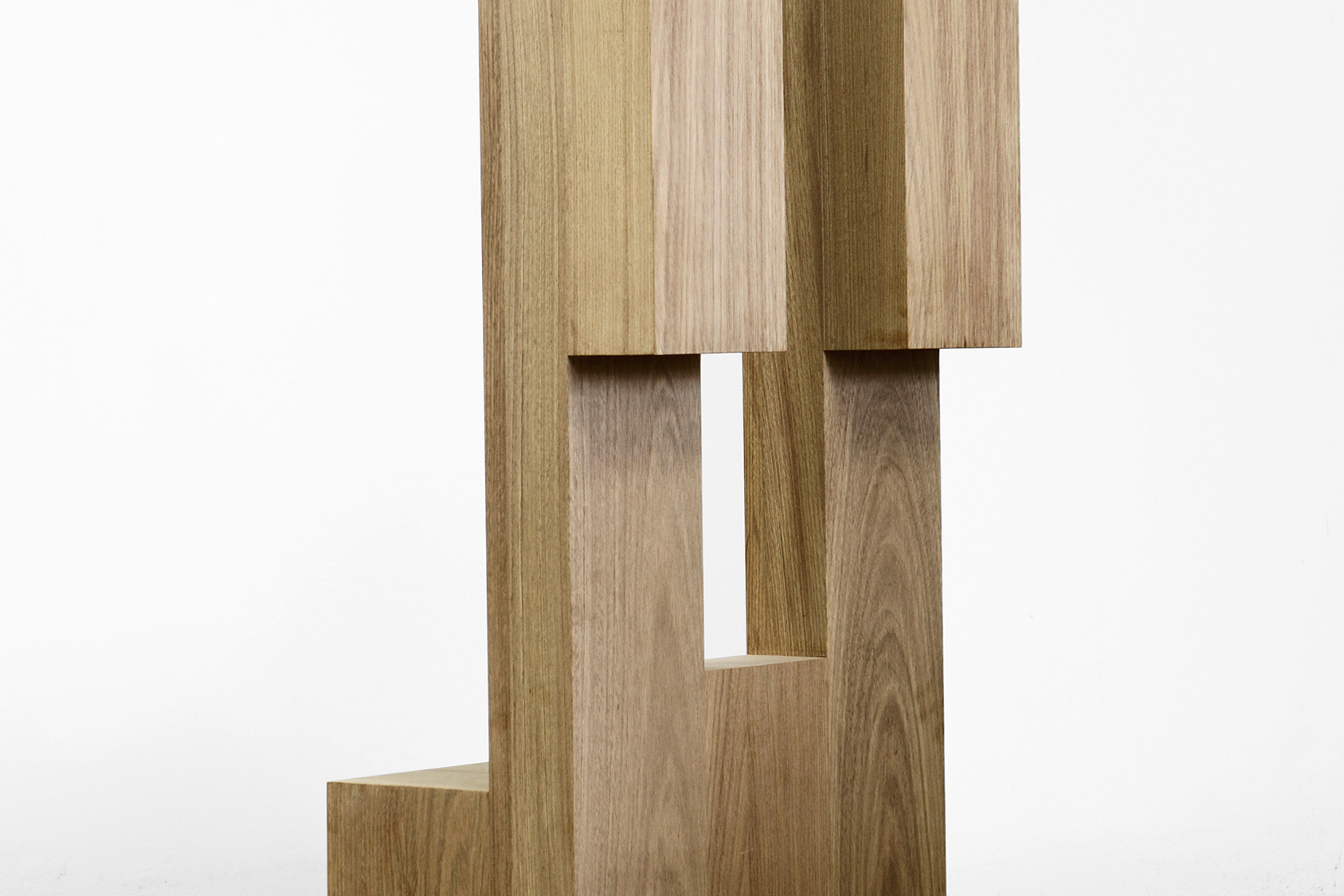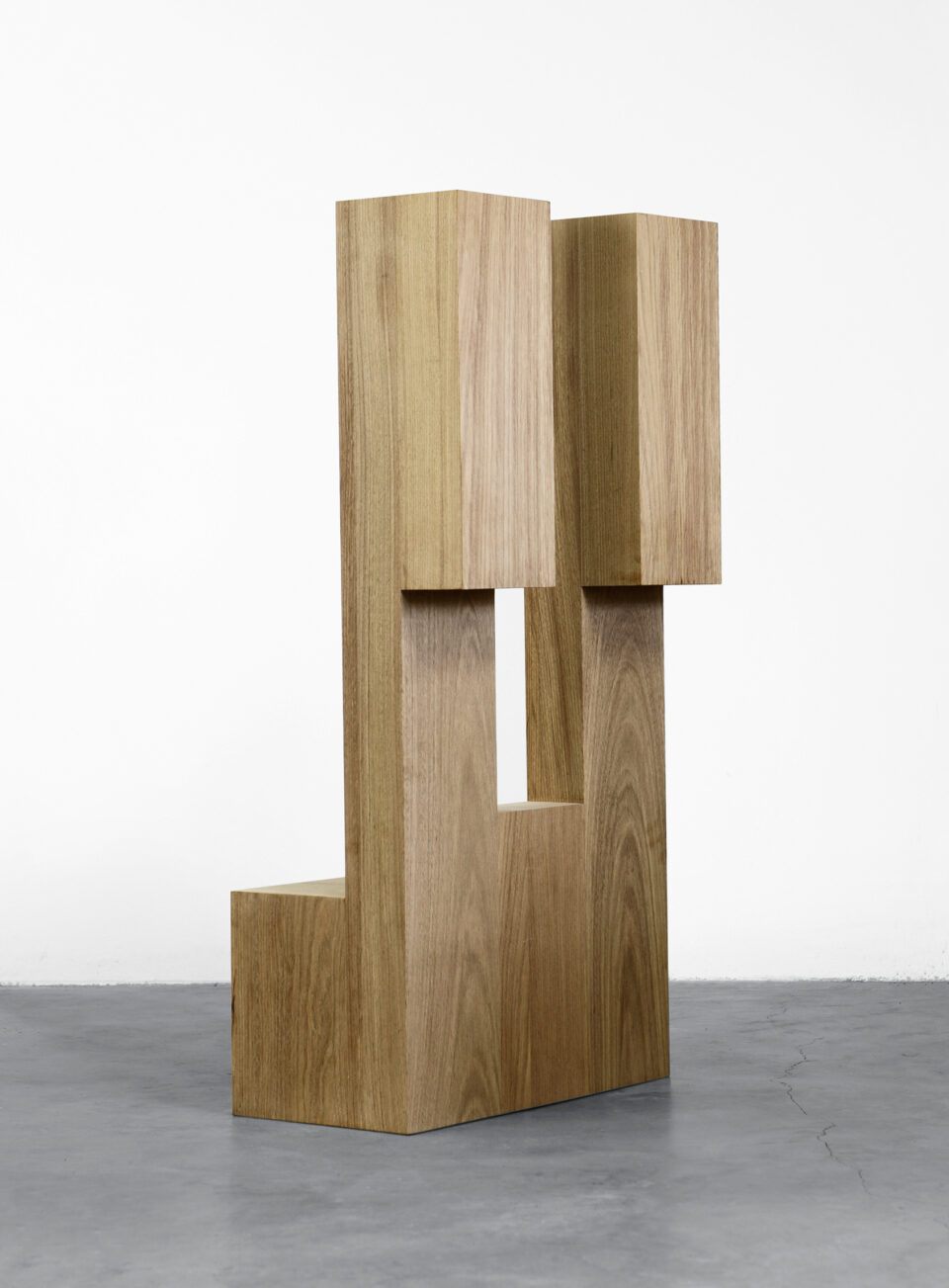Untitled (Monument)
In Untitled (Monument) Gaviria interrogates a critical juncture of the history of cybernetics with the wooden fabrication of one of the first ever technical models designed on a computer.
Gaviria’s work points back to an important video of a complex 3D shape displayed with Sketchpad, Ivan Sutherland’s PhD dissertation software built at Group 51 in Lincoln Laboratory, an applied research lab at MIT. In this video, filmed some time after 1964, Timothy Johnson and Lawrence Roberts—researchers at Lincoln Laboratory—show the operations of Sketchpad running on the experimental TX-2 computer.
In the video, Roberts shows a strange shape being rotated in perspective view—perhaps the design for a “piece of wood,” Roberts coyly suggests. In “Untitled (Monument),” Gaviria fabricates Roberts’ object in large scale—produced from wood.
As seen in the video, the ability to issue a command and receive an immediate response from a computer was basically unprecedented at the time. The idea of virtually manipulating 3D drawings must have seemed otherworldly. But despite the compelling demos, the Computer Aided Design idea was really just an example of interactive computer control, which was the original goal of the TX-2 computer and the broader vision for the Sketchpad research programme.
The interactive computer work performed at Lincoln Laboratory was funded for the purpose of improving military command and control processes. To be able to understand and respond to increasingly large and complicated military data stores, interactive computer use was a practical necessity for the military’s version of human-computer interaction… Today’s modern command and control infrastructure is in every way tied up with these developments at Lincoln Laboratory, and are thus conceptually linked to Untitled (Monument).
– Quinn DuPont


